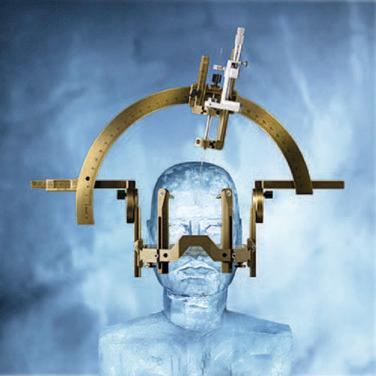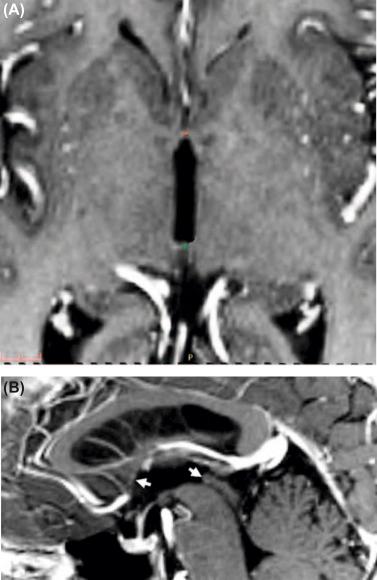Physical Address
304 North Cardinal St.
Dorchester Center, MA 02124
Traditionally, deep brain stimulation (DBS) has been performed by using frame-based stereotaxy in an awake patient. Frame-based stereotaxy has been the technique of choice due to its perceived superior accuracy over “frameless” approaches, while awake testing was deemed essential to both confirm clinical efficacy and ensure a well-tolerated side effect profile. In recent years, the tide has shifted toward the use of targeting devices other than traditional stereotactic frames, as well as toward the use of intraoperative imaging to confirm lead placement and, in many cases, replace the need for intraoperative physiologic testing. Several reports have discussed in detail the target-specific surgical and microelectrode recording (MER) techniques for the surgical treatment of movement disorders ( ). This chapter will review the fundamentals of these techniques as practiced by the authors.
There are several stereotactic headframe-and-arc systems available, and the choice depends largely on the surgeon’s experience and preference. Fig. 36.1 shows the Leksell (Elekta, Stockholm) stereotactic headframe-and-arc system fully assembled, as used in DBS implantation surgery. The headframe is placed usually on the morning of the surgical procedure with the patient awake or sedated, and the scalp is anesthetized at each pin site with local anesthetics. The canthal–meathal line can be used as a reference to align the frame as parallel as possible to the anterior commissure–posterior commissure (AC-PC) plane. In addition, care should be taken to avoid any roll, pitch, or yaw with the placement to minimize errors when changing the coordinates for additional electrode penetrations during surgery. After placement of the headframe, computed tomography (CT) and/or magnetic resonance (MR) imaging (MRI) studies are acquired with a localization device attached to the frame. The stereotactic fiducials become part of the imaging data set, and from that moment onward, planning and stereotactic localization will rely on the constant stability of the frame in relation to the patient’s head.

“Frameless” stereotactic devices are now approved by the US Food and Drug Administration for use in the United States and are a valid alternative to traditional frame-based stereotaxis. Advantages of these systems include less discomfort associated with the frame placement, as well as suitability for use in patients with severe kyphotic deformities that preclude CT/MRI image acquisition with a frame in place and the rare patient with a head too large to fit in a frame. The reference system used for frameless surgery consists of at least four skull fiducials typically implanted in the office setting under local anesthesia in the day(s) preceding surgery. A stab wound is created with a scalpel and the fiducial’s self-tapping screw is fixed to the skull. The day of surgery, a platform-like device is affixed to the patient’s head, either a custom-made platform that mounts on the screws themselves and does not require image guidance ( ) or a standard one that mounts on the burr hole cap and uses optical tracking ( ).
Studies comparing the stereotactic accuracy of frame-based versus frameless systems have indicated that any differences in accuracy between the two methods do not appear to be clinically significant ( ). From an economic standpoint, stereotactic frames typically represent a large one-time capital expense that can be applied repeatedly for several years (with maintenance), while the frameless disposable system adds significant cost to each individual surgery. Additionally, frame-based stereotaxy can be performed with MRI alone, while frameless systems require an additional CT scan to localize the bone fiducials.
MRI is the imaging modality of choice in stereotactic targeting and planning, allowing for accurate identification of the AC and PC, standard landmarks used in indirect targeting ( Fig. 36.2 ), and direct identification of targets or landmarks. However, magnetic distortion may hamper the geometry of the stereotactic space. Our preference is to acquire the MRI in the weeks that precede surgery and then fuse the images to a stereotactic CT scan obtained on the day of surgery. The objective is to benefit from the excellent resolution of MR images while relying on CT for stereotactic accuracy. CT-based stereotaxis may be the only option in patients with implantable cardiac pacemakers-defibrillators, in whom indirect AC-PC based targeting (see later) is the primary targeting method.

Become a Clinical Tree membership for Full access and enjoy Unlimited articles
If you are a member. Log in here